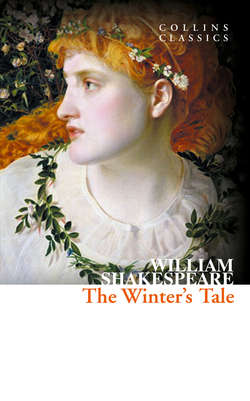Читать книгу The Winter’s Tale - Уильям Шекспир, William Szekspir, the Simon Studio - Страница 10
INTRODUCTION
ОглавлениеAs a budding playwright, Shakespeare was attacked by an older writer, Robert Greene, for plagiarism: ‘an upstart Crow, beautified with our feathers’. Towards the end of his career, for his next-to-last play to be completed, Shakespeare drew upon a story by this same Greene, and so created The Winter’s Tale.
In Shakespeare’s own period, older playgoers, remembering Greene and seeing this work for the first time, must have thought they knew how it ended. The king, consumed by jealousy, repudiates his queen, who dies. He soon after recognises his error, but it is too late. That, at least, is the story of Greene’s Pandosto. Shakespeare, however, picks up this simple tale and turns it into a myth of resurrection. We all, like the early playgoers, think Hermione to be dead. We see her fall, deadly sick, on stage. News of her death is brought by Paulina, whom we know to be a reliable witness. Sixteen years pass, without any sign of her.
Tragedy lies very close to comedy here. The earlier episodes, the autumn and winter parts of the play, display the imagery of disease and dearth: ‘Why then the world and all that’s in’t is nothing;/The covering sky is nothing; Bohemia nothing;/my wife is nothing; nor nothing have those nothings,/If this be nothing’. But those corrugated rhythms give way to the comedy of Autolycus and his song of spring: ‘When daffodils begin to peer,/With heigh! the doxy over the dale’. There is the daughter who was thought lost, Perdita in her harvest scene, also evoking the spring: ‘daffodils,/That come before the swallow dares, and take/The winds of March with beauty’. This prefigures the restoration of Hermione, which is the key to the play.
The meeting of Perdita with Leontes, her father, which could have been one of Shakespeare’s reconciliation set-pieces, is reported at second hand in order to preserve the grand climax for the restitution of Hermione. There, at the end, is the Statue Scene when Hermione rises, as though from the dead, and joins her repentant husband.
So far from attempting to seem naturalistic, the text drives home the impossibilities: ‘That she is living,/Were it but told you, should be hooted at/Like an old tale’. But Shakespeare has paid the ‘old tale’ of his former enemy, Robert Greene, the supreme compliment of turning it into high drama. Leontes says, ‘I saw her,/As I thought, dead; and have, in vain, said many/A prayer upon her grave’. However, the prayers have not been in vain. The whole scene is an acting out of resurrection.
The extravagance of the plot is matched by that of the structure. Such critics as the Italian, Castelvetro, and the Englishman, Sir Philip Sidney, thought that the Greek philosopher, Aristotle, had imposed rules on the drama that decreed restrictions as to the time a play should encompass in its action, the place – only one – it should represent, and the plot – very simple – that it should deploy. These rules were called ‘unities’, and Shakespeare violated these unities in an exuberant fashion. The action covers sixteen years, and not smoothly: there is a gaping void between Act 3 and Act 4. The scenes swerve between Sicily, the kingdom of Leontes, and Bohemia, the kingdom of his supposed rival, Polixenes. The plot, as we have seen, is far-fetched beyond all decorum. However, the appeal is not to the intricacies of art, but to nature. In the end, what we are shown is nature’s own cycle, represented in the death and restoration of Hermione. She is a kind of earth goddess. We see the earth die, every winter. Yet it revives in the spring. It is an idea similar to that of Jesus’ parable of the Prodigal Son. He ‘was dead, and is alive again; he was lost, and is found’ (Luke 15:24).
